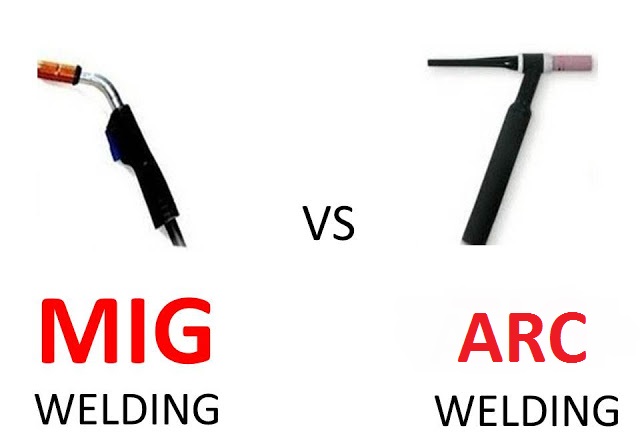
Welding is an art that requires a lot of training to be able to achieve a solid connection between parts. There are many different techniques, such as mig welding and arc welding with a coated electrode. Both procedures use different electrical sources. When carrying out the welding process to machine materials, two types of welds can be used. The Arc welding and the Mig welding consist of a metal protective gas. In this article, we will see the difference between mig and arc welding.
Differences between arc and mig welding
When we use arc welding we use a tungsten electrode that is not consumed during the process. In mig welding, we use a metal electrode that serves as filling material. Both are the best welder for beginners.
The gas used mainly in arc welding is argon, helium can occasionally be used. Also argon it is used in welding mig, often mixed with carbon dioxide.
The filler material used in the arc weld is a rod or wire totally external to the welding machine. On the contrary, in the soldier mig delivers the material through the tubular electrode.
Arc welding can be applied to almost any type of metal, from steel to aluminum. On the other hand, mig welding developed for non-ferrous metals (except steel).
Arc welding is considered more difficult than mig welding. The tolerances must be more stringent between the electrode, the filler rod and the piece that we are going to the machine.
What is Arc welding?
 Arc welding is the process of creating an electric arc between two points, then using the heat generated by that arc to melt the metal. In modern times, it is a generalized technique due to its low cost and effectiveness. Although it is a common and vital piece of technology in the modern world, it is not a new invention. Technology has been around for more than two centuries.
Arc welding is the process of creating an electric arc between two points, then using the heat generated by that arc to melt the metal. In modern times, it is a generalized technique due to its low cost and effectiveness. Although it is a common and vital piece of technology in the modern world, it is not a new invention. Technology has been around for more than two centuries.
It is a type of high demand and well listed in the workplace. It uses AC current and is defined by the use of a permanent tungsten electrode. Sometimes we can find it alloyed with thorium or zirconium in percentages no higher than 2%. At present, thorium is banned since it is an element that is considered harmful to health. The tungsten because of the high temperature casting 3410°C, just wear after prolonged use. The most commonly used gases are Aragon and helium, or a mixture of both.
The main advantage of the Arc is the obtaining of more resistant, flexible and less sensitive oxidization cords than in the rest of the procedures. The protective gas prevents contact between the oxygen of the atmosphere and the fusion bath. It also allows for obtaining clean and uniform welds due to the shortage of fumes and projections.
As a disadvantage, we can find the continuous flow of gas, with the subsequent installation of pipes, cylinders, etc. It requires a highly specialized workforce, which also increases costs.
What is Mig welding?
 The Mig welding (Metal Inert Gas) is a process of arc welding under protective gas with the consumable electrode. The arch is formed by a continuous thread and the pieces to be joined. This welding is intrinsically more productive than MMA (manual metal arc) welding where part of the productivity is lost each time a stop occurs to replace the electrode. The uses of wires for mig welding have increased between 80 and 95%.
The Mig welding (Metal Inert Gas) is a process of arc welding under protective gas with the consumable electrode. The arch is formed by a continuous thread and the pieces to be joined. This welding is intrinsically more productive than MMA (manual metal arc) welding where part of the productivity is lost each time a stop occurs to replace the electrode. The uses of wires for mig welding have increased between 80 and 95%.
This type of welding is a versatile process, being able to deposit the metal at a great speed and in all positions. It is used in small and medium thicknesses in steel structures. Also in aluminum alloys where a high welding resistance is needed. The metal tubular electrode used in mig welding serves as a filler material for welding. The electrode is consumed during the welding of the pieces.

Leave a Reply